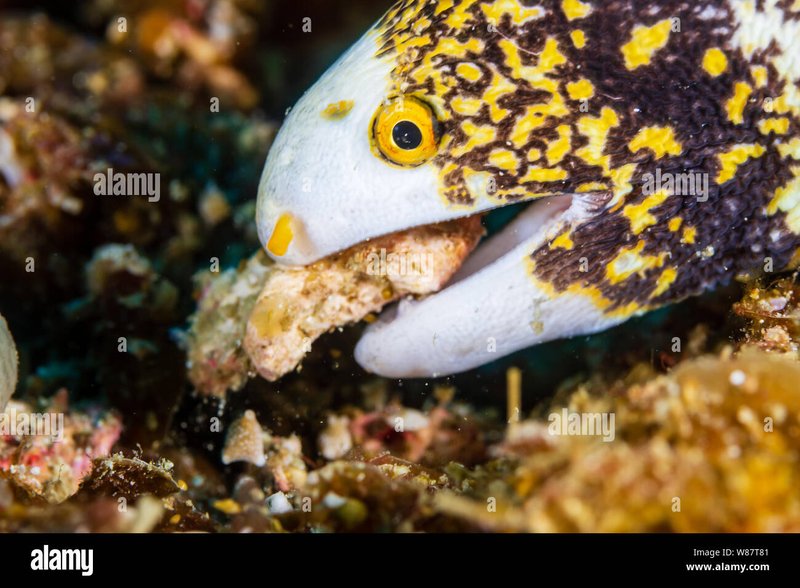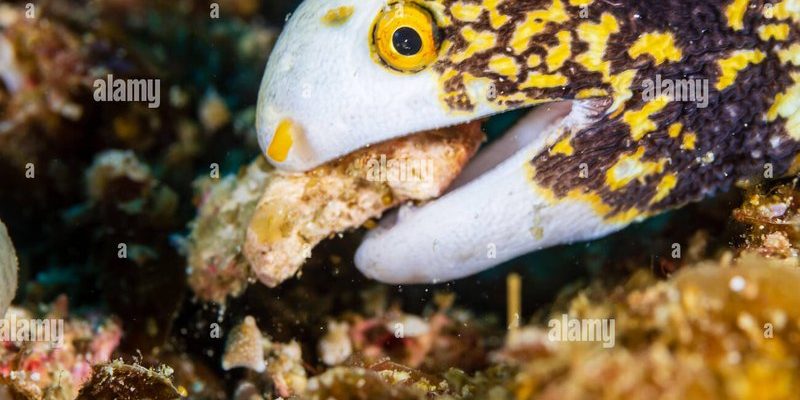
Eels belong to a unique group of fish known as *anguilliformes*, which includes various species like the common eel and the American eel. These creatures are found in both freshwater and saltwater, showcasing their adaptability. Let’s dive into their diet and see what makes these fascinating fish tick!
What Do Eels Eat?
Eels are opportunistic feeders, meaning they eat whatever is available to them. Their diet varies not only by species but also by their environment. For instance, freshwater eels often munch on insects, mollusks, and small fish, while saltwater eels might feast on crustaceans and other fish. Here’s a more detailed look at their feeding habits:
- Insects and Larvae: Young eels, especially those in freshwater, often start their lives eating insect larvae and small invertebrates. This diet helps them grow strong and prepare for more substantial meals later on.
- Mollusks: Eels love snails and soft-bodied mollusks. They have sharp teeth and a flexible body, which allows them to easily hunt and consume these creatures.
- Fish: As they mature, eels become more predatory, feasting on small fish. This shift in diet reflects their growth and need for more energy.
- Crustaceans: Saltwater eels particularly enjoy shrimp, crabs, and lobsters, showcasing their adaptability in different environments.
You might be wondering how they find their food. Eels have a strong sense of smell and can detect scents in the water, helping them locate meals even in low-visibility areas.
Feeding Methods of Eels
The way eels feed is quite interesting. Unlike many fish that simply gulp their food, eels often employ a more stealthy approach. They rely on their flexibility and agility to catch prey. Let’s break down their feeding methods:
- Sneak Attacks: Eels are masters of stealth. They often hide in crevices or among aquatic plants and wait patiently for their prey to swim by. When the moment is right, they swiftly strike.
- Ambush: In some cases, eels will ambush their food by launching themselves from their hiding spots, exhibiting remarkable speed and agility.
- Grasping with Teeth: Their sharp, pointed teeth are designed to grip slippery prey, ensuring it doesn’t escape once caught.
This unique hunting strategy makes them efficient predators in their environment. Honestly, watching an eel hunt can almost feel like witnessing a little underwater drama unfold!
The Role of Eels in the Ecosystem
Eels play a significant role in their ecosystems. They help maintain the balance by being both predators and prey. Here’s why their diet matters to the environment:
- Controlling Populations: By feeding on various species, eels help control populations of insects and smaller fish, preventing any one group from becoming too dominant.
- Serving as Prey: Eels are also an essential food source for larger predators like birds and bigger fish. Their presence contributes to the overall health of the food web.
- Nutrient Cycling: Through their feeding activities, eels help recycle nutrients back into the ecosystem, promoting biodiversity.
With this balance, eels contribute significantly to the health of freshwater and marine environments alike.
Seasonal Changes in Eel Diet
Did you know that eels’ diets can shift with the seasons? Just like many animals, eels adapt their feeding habits based on what’s available. Here’s how their eating patterns change throughout the year:
- Spring: As temperatures rise, many insects become more active, providing eels with a buffet of larvae and young fish to eat. This is a prime time for eels to fatten up after winter.
- Summer: In summer, food is plentiful. Eels will take advantage of the abundance, hunting small fish and crustaceans in addition to insects.
- Fall: As days shorten and temperatures drop, eels start to prepare for winter. They often stock up on energy by consuming more protein-rich foods.
- Winter: Eels tend to slow down their feeding during winter months. In colder regions, they may even stop eating altogether as they conserve energy and enter a state of dormancy.
Understanding these seasonal changes could help anglers figure out when to fish for eels. If you’re targeting them, timing can be crucial!
Feeding Eels in Captivity
If you’re keeping eels as pets, you might wonder about their diet in captivity. It’s important to replicate their natural feeding habits as closely as possible. Here’s what you need to know:
- Live Food: Eels thrive on live foods like minnows, worms, and insects. They enjoy the chase, and live prey mimics their natural hunting experience.
- Frozen or Freeze-Dried Options: If live food isn’t available, frozen or freeze-dried alternatives can also work. Just be sure to look for high-quality options to provide the necessary nutrients.
- Pellets: Some companies make specialized pellets for eels, infused with the right nutrients to keep them healthy. These can be a convenient way to ensure a balanced diet.
Monitoring their feeding habits is key. You’ll want to make sure they’re eating well and maintaining a healthy weight.
The diet and feeding habits of eels reveal so much about their adaptability and survival strategies. From their opportunistic feeding patterns to their role in the ecosystem, eels are more than just slippery fish. They are fascinating creatures that contribute to the balance of aquatic life. Whether you’re an angler, a pet owner, or just curious about the natural world, understanding what eels eat can deepen your appreciation for these unique animals.
So, next time you see an eel, think about the complex web of life it’s part of and how its diet plays a vital role in that ecosystem. Eels might be mysterious, but once you peek into their world, they become a lot more relatable and fascinating.

